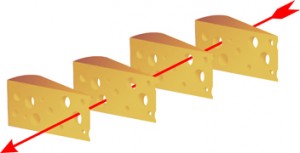 There have been a few aviation accidents and incidents in the past which proved to be critical to the way the regulators incorporated Human Factors into their understanding of the maintenance process. Arguably most notable among these was the in-flight failure over Hawaii of a Boeing 737 fuselage skin along its longitudinal lap joints, resulting in fuselage structure loss behind the forward door down to floor level. The inspection of the rivet lines was found to be ineffectual due to how and when it was performed.
There have been a few aviation accidents and incidents in the past which proved to be critical to the way the regulators incorporated Human Factors into their understanding of the maintenance process. Arguably most notable among these was the in-flight failure over Hawaii of a Boeing 737 fuselage skin along its longitudinal lap joints, resulting in fuselage structure loss behind the forward door down to floor level. The inspection of the rivet lines was found to be ineffectual due to how and when it was performed.
The principles of Crew Resource Management on the flight deck, were found to have relevance in aircraft maintenance as well. Regulators, academics, OEMs and operators joined forces to determine the root causes of these accidents and incidents, and from that work the significance of human performance in maintenance error was identified. As a result the Human Factors (HF) training of safety critical personnel, including maintenance engineers, has become mandatory in most jurisdictions.
CASA, FAA and EASA each recognise that those performing, auditing, managing and planning aircraft maintenance need to be aware of the limitations of human performance, and how these limitations may contribute to maintenance errors. Awareness is usually achieved through Human Factors education. HF education should meet both the requirements of the regulations, but also be specific enough to be directly relevant the employee’s operational environment.
HF education provided by Aero Compliance is delivered by a Master’s degree qualified person in Safety Science who is also Baines Simmons trained. It is prepared in conjunction with the AMO, based on the Part 145 AMC core material, with emphasis on those aspects of particular relevance to the employees. The effectiveness of training has been found to be enhanced when it incorporates examples drawn from their own experiences. A solid understanding of Human Factors is a key element in a maintenance organisation’s safety culture, and Aero Compliance can help build that foundation.
